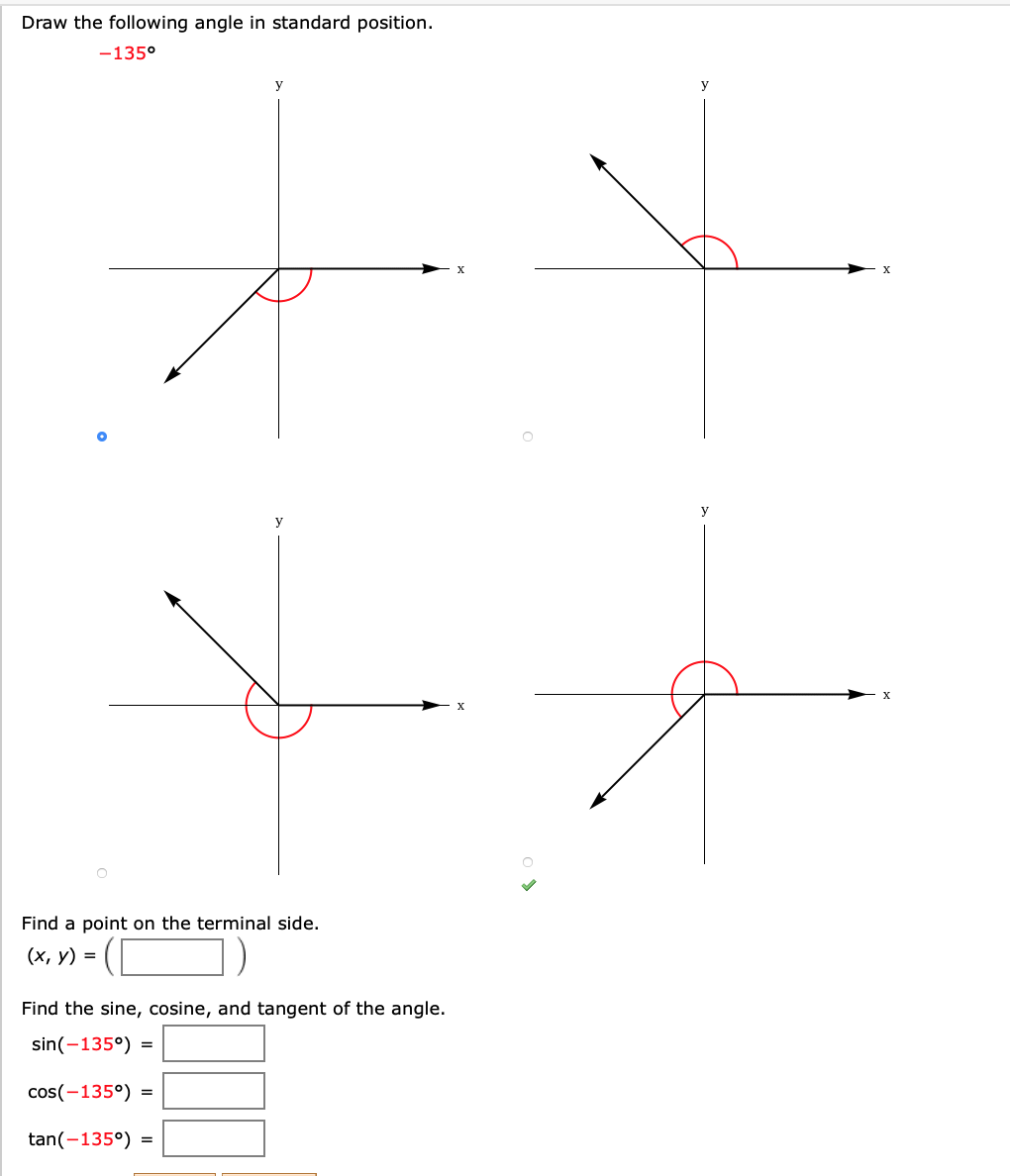

I don't know if you're familiar with this: Now we have all of the values we need to determine our trigonometric functions. We now have the length of the hypotenuse at 13. We now take the square root of 169 to come up with 13. Using the Pythagorean Theorem we know that: a-squared + b-squared = c-squared. With that we can now find the length of the hypotenuse. You may have noticed that you also have the side lengths of your triangle, given by the x and y values. Now draw another line from point (5, 0) to the original point you plotted (5, -12).Īt the moment you should have a nice right triangle drawn.Now draw a line from the origin (0, 0) to point (5, 0).

This line you just drew gives you the hypotenuse side of the triangle you're about to draw. Draw a line from the origin, also known as point (0, 0) on your graph, to the point you just plotted at (5, -12).Therefore, we're first going to draw the right triangle the question gives you. I find it's best to visualize what we're actually doing. When something asks for the "least possible positive measure", it's just asking for something between 0 and 360 degrees. **A quick note before we start, remember that the unit circle is 360 degrees. The point $P$ is at distance $$r=\sqrt$, but the ratios would be unchanged. If you wish, I will amplify the post to deal with them all. Now it should not be hard to find $\sin\theta$, $\cos\theta$, and so on.

Also, rotation through $\theta+4\pi$ would get you to the same place, and so on. One says "the smallest angle" (or in fancy language, the angle of smallest positive measure) because if rotating counterclockwise through $\theta$ gets you to $P$, then so does rotation through $\theta +2\pi$ (in radians) or rotation through $\theta +360^\circ$, if you are using degrees. Remember that rotation counterclockwise is positive by definition. Let $\theta$ be the smallest positive angle through which you need to rotate the positive $x$-axis so that it will pass through $P$. Draw axes as usual, and identify the point $P=(5, -12)$. All of the fancy language unfortunately muddies what is a simple situation.


 0 kommentar(er)
0 kommentar(er)
